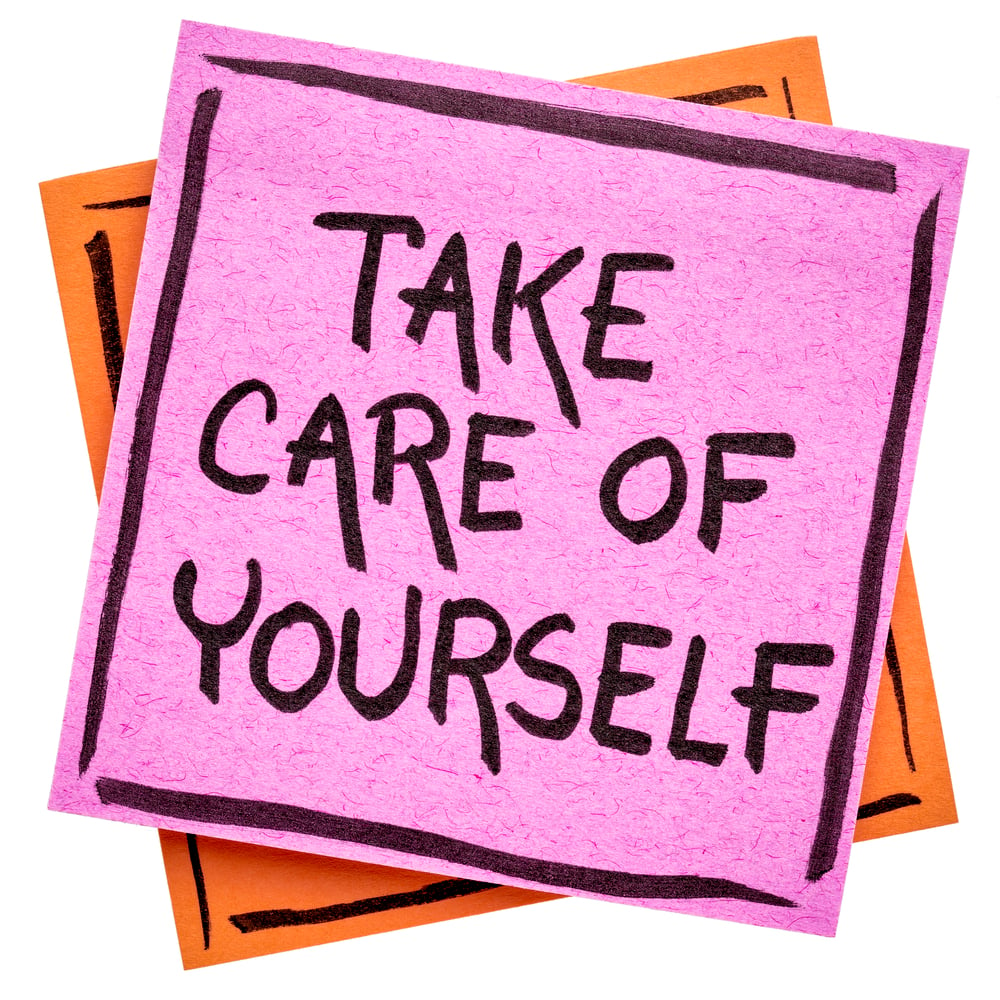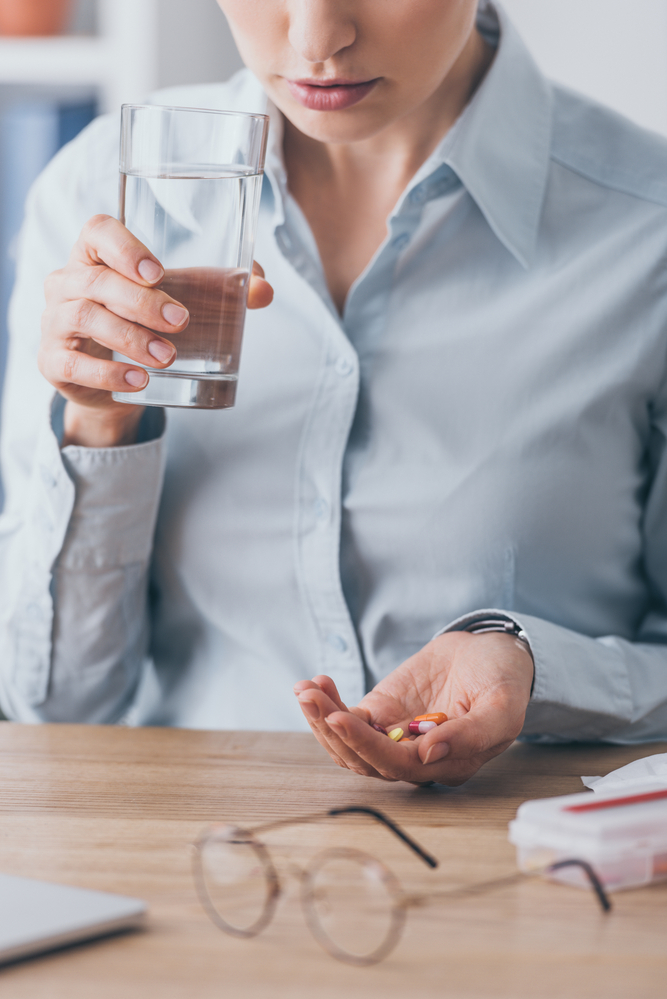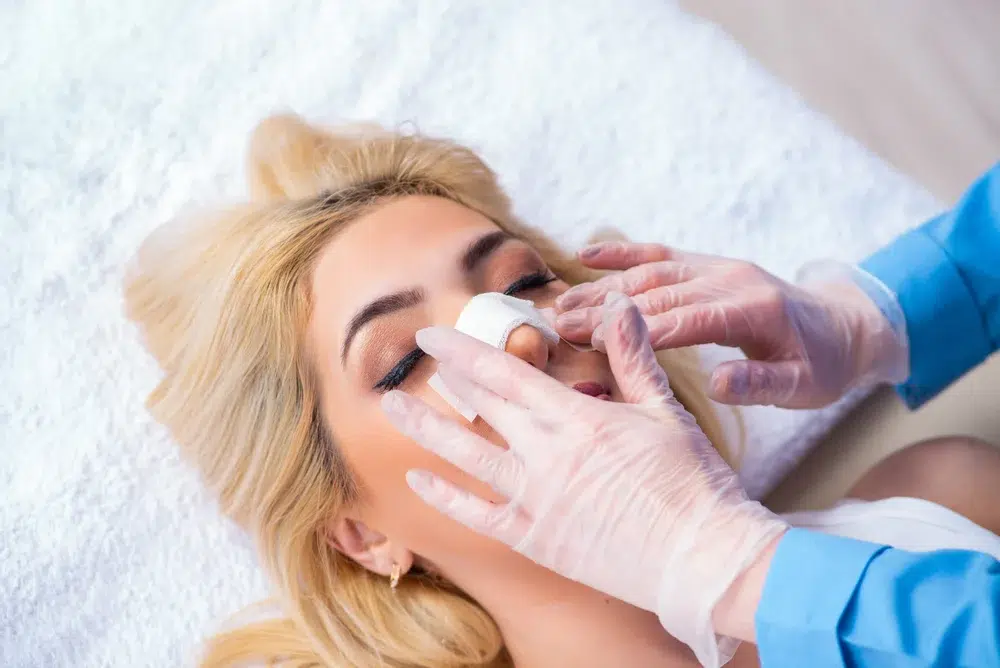Septoplasty, also known as nasal septum repair, is an outpatient procedure designed to correct a crooked or deviated septum. While there may be no visible signs of deformity, you or a loved one may have noticed constant unilateral or bilateral nasal obstruction. Depending on the severity of the condition, it can lead to more serious conditions, such as recurrent nosebleeds, sleep apnea or chronic or recurrent sinus issues.
Whether you were born with a deviated septum or a traumatic injury caused a deviation, you don’t have to live with chronic sinus pain and breathing issues. At C/V ENT Surgical Group, we are proud to offer septoplasty, a 30 to 60-minute outpatient procedure used to repair a deviated septum. While this procedure is extremely safe and effective, there is downtime associated with this procedure. Keep reading to discover how to care for yourself for the first few weeks after your nasal septum repair procedure, as well as what to expect during the recovery process.
What to Expect During Recovery
The Day of the Procedure
You can expect to leave our state-of-the-art surgical center within an hour or two of your procedure. You should feel little-to-no pain or discomfort, no splints, and no external bruising.
1 to 3 Days Post-Op
Most of our patients report that they do not take any pain medications after their procedure. If you are extremely sensitive to pain, you may need to take prescription painkillers for one to three days post-op. If the tip of your nose is mildly sore or you feel slight pressure, you should feel better within seven days post-op.
Your surgeon may place either no packing, dissolvable packing, internal splints or regular packing. If regular packing is placed, it will be removed the day after your procedure.
3 to 5 Days Post-Op
Nearly all of our patients are able to return to work within three to five days of their procedure. If your job requires extensive lifting and bending, you must wait at least seven calendar days before returning to work if your duties cannot be modified.
How to Care for Yourself After a Septoplasty
Rest
It is important to rest whenever you feel tired. To speed your recovery process, sleep whenever you feel the need to. To mitigate the risk of swelling, use two or three pillows to support your head rather than lying flat on your back. Remember, you must sleep on your back or in a reclining chair for the first month post-op.
Activity

Avoid Bending and Lifting
For the first week post-op, do your best not to bend over or lift anything heavier than 10 pounds. This includes bending over to pick up a heavy backpack or briefcase, picking up your children, carrying bags of dog food or cat litter, carrying a vacuum cleaner to another room in your house and transporting milk containers and groceries.
Avoid Strenuous Activities
For the first week post-op, or until your surgeon gives you the green light, do not engage in strenuous activities. These include vigorous aerobic exercise, like running and cycling, as well as strenuous anaerobic activities. You can shower and bathe after your procedure, but you must not swim for six weeks post-op.
Drive When You Feel Ready
After your procedure, you can take prescription narcotics as needed to manage your pain. But you can’t drive within 24 hours of taking narcotics. Once you’re only taking Tylenol for discomfort, you can drive when you feel up to it.
Diet
You don’t need to consume a special diet after your procedure. However, if you feel gastrointestinal distress, try bland foods, such as toast, yogurt, plain rice, and boiled chicken until you feel better.
You may notice that you’re not as regular as you normally are during the first week post-op. This is perfectly normal. Just do your best not to strain while making bowel movements. Take a fiber supplement while you are taking narcotic painkillers or eat more whole grains, legumes, and high-fiber fruits. If you have not had a bowel movement within the first 48 hours post-op, talk to us about taking a mild laxative.
Ice
Ice is just as important for reducing swelling as elevation is. To reduce swelling and numb pain, put a cold pack or ice on your nose for 10 to 20 minutes at a time. Just be sure to place a thin cloth between the ice or cold pack and your skin.
Incision Care
After your procedure, you will have a drip pad beneath your nose to collect blood. This should only be changed when it has bled through. For most people, the drip pad must be replaced every hour for the first 24 hours post-op. Once the bleeding stops, the pad may be removed. If there is packaging in your nose, do not remove it. Your surgeon will at a later date.
Other Instructions
Do not blow your nose for one week post-op. Do not insert anything into your nose. If you feel the urge to sneeze, do so naturally with your mouth open. Do not wear contacts for the first 24 hours post-op. You may wear glasses whenever you wish.
If there was any packaging removed, use salt water (saline) nasal washes afterward. This helps to keep your nasal passages open while washing out bacteria and mucus. Many people prefer to purchase saline nose drops from their favorite drugstore or grocery store. But you can easily make your own at home by adding a teaspoon of baking soda and a teaspoon of salt to two cups of distilled water.
If you make your own saline nose drops, draw the solution into a bulb syringe until it is full. Insert the tip into your nostril and gently squeeze the solution into your nasal passage. Then, blow your nose.
Tips for Taking Prescription Medications

If you take blood thinners, such as aspirin, warfarin (Coumadin) or clopidogrel (Plavix), bring this up in your initial consultation. He will advise you if and when you should start taking these medications again. It is crucial that you understand and follow all of your doctor’s instructions.
Take your antibiotics as prescribed. Do not stop taking them just because you feel fine. If your prescription pain medicine is causing you gastrointestinal distress, take your medicine after meals unless specifically instructed by your doctor.
If the timing of your dose and a mild laxative do not alleviate stomach pain, ask for an alternative analgesic. You should also avoid taking two or more analgesics simultaneously unless instructed by your doctor. For example, do not take Tylenol (acetaminophen) at the same time as Excedrin, which also contains acetaminophen.
Do not take anti-inflammatory medications, like ibuprofen or naproxen, for three weeks post-op. You should also avoid taking any medications containing aspirin for three weeks post-op unless your doctor tells you it is okay to do so.
Learn More About Septoplasty Today
Are you sick and tired of inadequate relief from over-the-counter sinus medications, nasal strips and sprays and other at-home breathing remedies? Do you suspect you suffer from sleep apnea? Do you experience recurrent or chronic sinusitis? Septoplasty may be right for you. To learn more about this life-changing deviated septum repair procedure, contact the professional ENT experts at C/V ENT Surgical Group today. Call us at 818-888-7878 to schedule your initial consultation. We will assess your condition and devise a tailored treatment plan to address all of your concerns.

